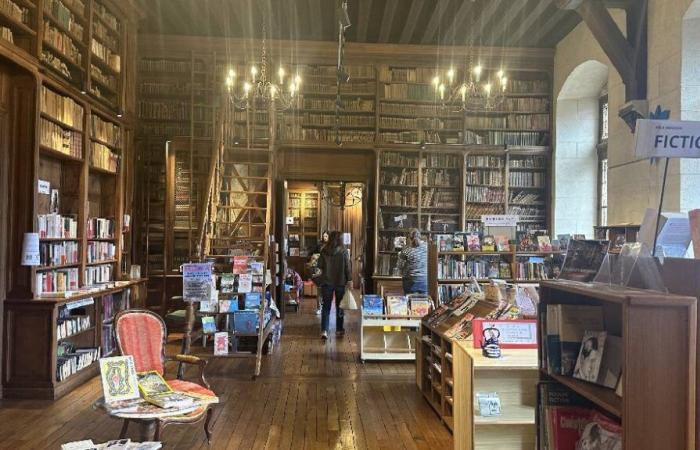
Manuscripts, modern books… The Clermont heritage library is full of numerous treasures, all in a building dating from the 14th century. L’Town Hall has in fact hosted within its walls the city library since the second half of the 19th century. After numerous works carried out in the past, the shelving is being transformed, even today, to accommodate the contemporary books while keeping its old backgroundaccessible to the public. From the incunable, one of the first books printed in the 15th century, to the last illustrated children’s book, the library houses 30,000 volumes including nearly 200 manuscripts.
Through the ages
The existence of a public library in Clermont appears, for the first time, in a deliberation of the Municipal Council of August 1, 1833. In this document, the elected officials complain of its “long neglected” state and wish to bring it back to life. This commitment seems to have been followed, because on August 18 of the same year, the mayor, Mr. Dugay du Fay, announced that the Ministry of Public Instruction had donated around sixty books to the library. These acts testify to the existence of the Clermont library, but its location in the city is not precise. The same goes for its origins, which still remain unknown.
In 1836, the municipality decided to begin the construction of an agricultural museum on the site of the old tennis court (currently Place Vohburg), including a room reserved for the library. On August 6, the municipal council voted for a credit of 600 francs for the acquisition of new works.
In October 1839, management of the library was entrusted to Philippe Simon Edouard Féret. The library was enriched with new works, but decades later, the city sold the agricultural museum to the department. The library no longer has premises and is suspending its activities. The books are then stored in a house before being deposited in a room at the Town Hall. From this date until 1877, there are no more traces of the functioning of the library. The books are sleeping.
In 1874, the Town Hall was classified as a Historic Monument on the recommendation of Viollet-le-Duc. The building will then undergo major restoration work. The back of the library, for its part, still remains piled up in the attic of the building. We had to wait for the work to be completed and the appointment of a new librarian, Mr. Pilon Dufresnes, for the works to be dusted off and listed.
In February 1888, the library opened its doors to readers in the premises it still occupies today. Premises which, before that, served as a wedding hall and municipal council room.
One library, several collections
The library offers readers a historical setting, in the structure of the building as in the works. The old background is arranged at the top, and the modern books at the bottom, available to the public. “There is a mix of contemporary books which distorts the library a little,” confides Emmanuel Bellanger, director of the culture and heritage department, “because there are more and more of them. This is why we are impatiently awaiting the creation of a media library, which is still in the planning stages today.”
Many books are related to the local history of the city. And, among the works, there is a collection of flags, the oldest of which dates back to the Revolution. “We owe these collections to the former mayor, Edouard Féret,” continues Emmanuel Bellanger, “whose aim was to preserve heritage. He realized that contemporary elements would be able to interest future generations. He thus kept many objects and documents such as engravings, paintings, a collection of old bullets…”
As the Town Hall is listed, it does not have an elevator. For people with reduced mobility, an annex library was opened in June 2009 in the premises of the Sociocultural Center, in the sands district.





